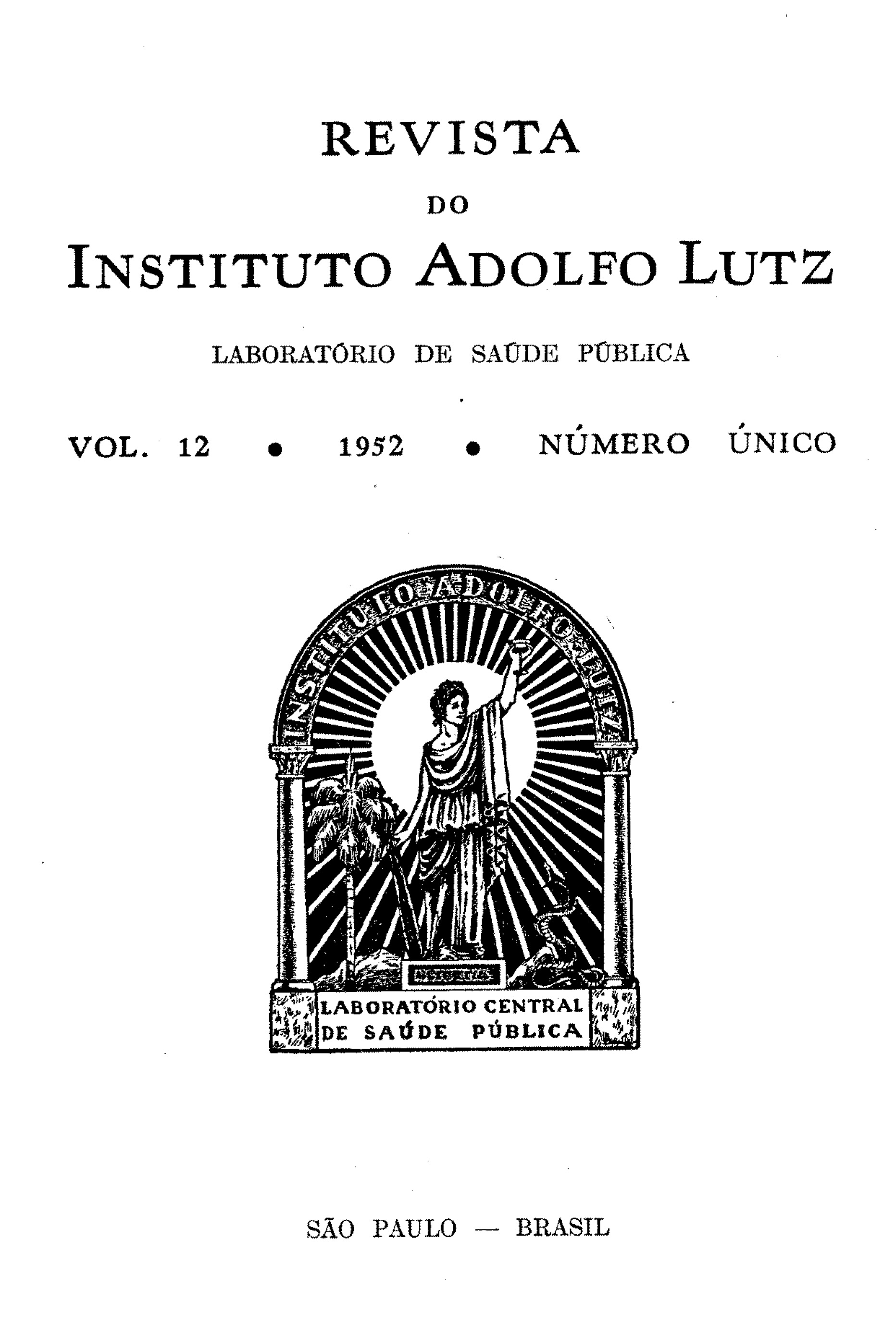Resumo
Os autores, após tecerem considerações gerais sobre a bacteriologia das fossas nasais e seios paranasais em indivíduos portadores de infecções e normais, chamam a atenção para um fato de verificação clínica diária, qual seja a ocorrência progressivamente mais frequente de formas agudas ou crônicas de infecções do trato aéreo superior resistentes à penicilina e também a outros antibióticos. Foi feito um estudo da flora microbiana do exsudato sinusal de 45 pacientes portadores de infecção e de 25 indivíduos clinicamente normais. Isolado o germe em causa, era o mesmo testado para os seguintes antibióticos: penicilina, estreptomicina, aureomicina, cloranfenicol e terramicina, no sentido de ser pesquisada a sua sensibilidade em relação a estes antibióticos. Foi sempre empregada a técnica dos discos impregnados pelo antibiótico. A comprovação clínica dos testes realizados no laboratório não foi feita pelos autores. O material foi obtido de três maneiras diferentes: por trepanação da parede anterior do seio maxilar no ato cirúrgico; por punção diameática e por aspiração do exsudato diretamente do meato médio. Nos indivíduos normais, foi feita a semeadura direta do muco nasal retirado por alça de platina. O estudo comparativo da flora dos pacientes com infecção e dos normais revelou uma diferença nítida entre uma e outra. Nos primeiros, predominavam os estafilococos, grupo hemófilo, pneumococos e Streptococcus viridans, enquanto nos outros havia preponderância de estafilococose difteróides, estando os outros germes ausentes. Testes de sensibilidade em todos os germens foram feitos apenas com a penicilina e o cloranfenicol, sendo que, com os outros antibióticos, apenas parte dos germes foram testados. O cloranfenicol foi o antibiótico que maior número de vezes se mostrou ativo contra os cocos Gram-positivos. A penicilina, que se revelou uniformemente ativa nos estreptococos e pneumococos, revelou-se ineficaz "in vitro" em grande percentagem dos estafilococos.
Referências
1. ABRAHAM,E. P. e E. CHAIN- 1940 - An enzyme from bacteria able to destroy penicillin. Nature 146: 837.
2. BARBER,M. e M. Rozwxnowsxx-Dozwzaxxo - 1948 - Infection by penicillin-resistant staphylococci. Lancet 2: 641-644.
3. BIER, O. - 1932 - Sôbre a diferenciação entre os estafilococos piogênicos e os estafilococos da pele. Rev. Assoc. Paul. Med. 1: 415-423.
4. BONDIJr., A., E. H. SPAUDINGe C. C. DIETZ- 1947 - A routine method for the rapid determanation of susceptibility to penicillin and other antibiotics. Am. J. Med. Sci. 213: 221-225.
5. CARDWEEL,E. P. - 1946 - Penicillin administered locally in treatment of disease of nasal accessory sinus: evaluation of bacterial sensitivity. Arch. Otoraryngology 44: 287-297.
6. DAVISON,F. W. - 1950 - Antibiotics and sinus infection. Laryngoscope 60: 131-14l.
7. DAVISON,F. W. ~ 1951 - The use of antibiotics in otolaryngology. Ann. Otol. Rhin. Laryng. 60: 207-220.
8. DEMEREC,M. - 1951 - Production of staphylococcus strains resistant to various concentrations of penicillin. Citado por W. W. Spin k, In J.A.M.A. 37: 278-293.
9. EAGLE,H. e A. D. MUZELMANN- 1948 - The rate of bactericidal action of penicillin in vitro as a function of its concentration and its paradoxically reduced activity at high concentration against certain organisms. J. Exp. Med. 88: 99-131.
10. EDITORIAL- 1951 - Penicillin-resistant staphylococci. J.A.M.A. 145: 1268-1269.
11. FLEMING,A. - A penicilina e suas aplicações práticas. São Paulo, Ypê, 1947.
12. GOLDMAN,J. L. - 1950 - Bacteriology and clínical interpretation of the flora of the nose and naso pharynge in adults. Ann. Otol. Rhin. Laryng. 59: 156-165.
13. Me LAURIN,A. W., D. M. TUTTLEe P. R. BEARNER- 1951 - Sensitivity of bacteria to chloramphenicol in vitro. Am. J. Clin. Path. 21: 189-19l.
14. MESQUITA,E. P. de - 1944 - Estafilococcias. Rev. Inst. Adoi]« Lute 4: 1-181.
15. MORLEY,D. C. - 1945 - A simple method of testing the sensitivity of wound bacteria to penicillin and sulphatiazole by the use of impregnated blotting paper discs. J. Path. Bact. 57: 379-382.
16. SCOTT,E. G. - 1950 - Aureomycin sensitivity tested by Bondi disc technic. Am. J. Clin. Path. 20: 65-77.
17. SPINK,W. W. - 1951 - Clinical and biological significance of penicillin resistant spaphylococci including observations with streptomycin, aureomycin, chloramphenicol and terramycin. J. Lab. Clin. M ed. 37: 278-293.
18. SPINK, W. W., W. H. HALLe V. FERRIS- 1945 - Clinieal significance of staphylococci with natural or acquire resistance to the sulfamides and to penicillin. J.A.M.A. 128: 555-559.
19. SPARREVOHN,U. R. e A. BUCH- 1946 - The bacteriology of maxillary sinusitis. Acta Oto-Laryngologica 33: 425-436.
20. TÕRNE, F. - Citado por F. Hansel, AlIergy of the nose and paranasal sinuses. St. Louis, C. V. MosIey Co, 1936.
21. VINCENT,J. G. e TI. W. VmcENT - 1944 - Filter paper disc modification of the Oxford cup penicillin determination, Proc. Soe. Esp. Biol. Med. 55: 162-164.
22. WILSON e MILLES- Topley and WiIson's principIes of baeteriology and immunity. BaItimore, Williams & WiIkins, 1946.

Este trabalho está licenciado sob uma licença Creative Commons Attribution 4.0 International License.
Copyright (c) 1952 Augusto de E. Taunay, Mauro Cândido de Souza Dias
